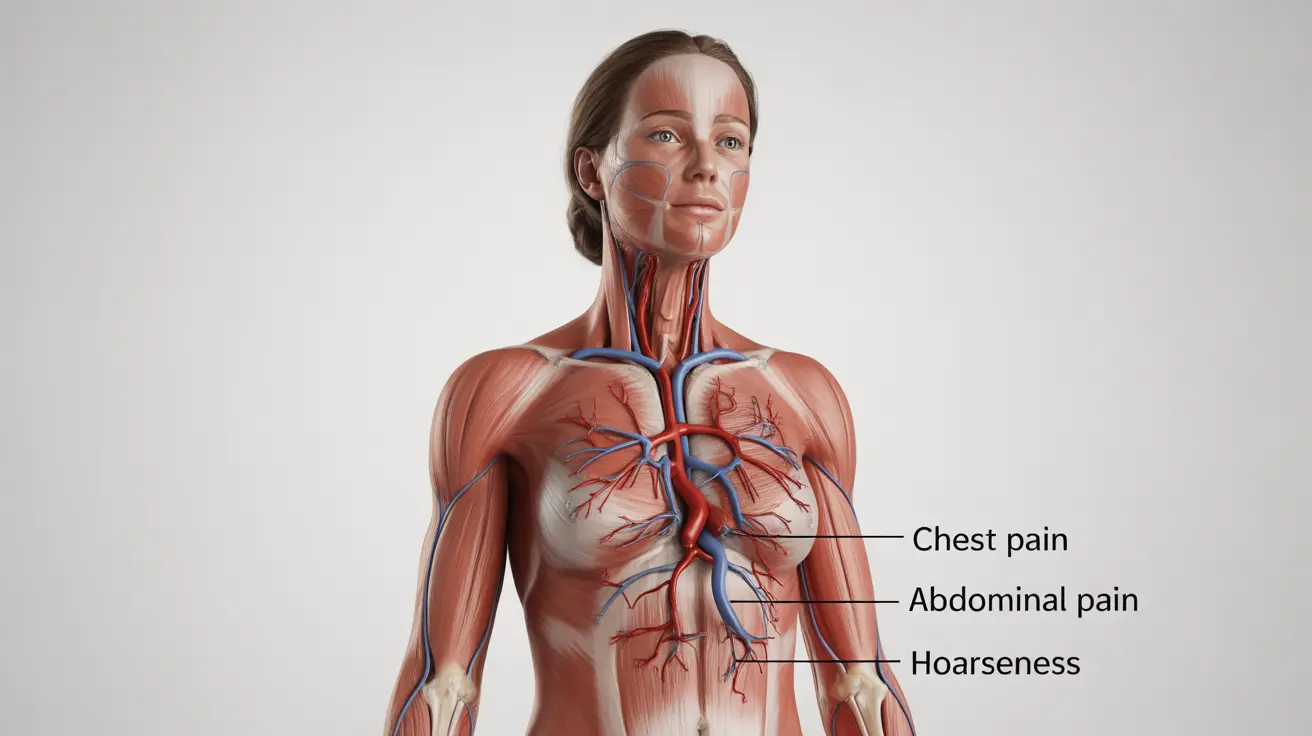Understanding aortic aneurysm symptoms in women is crucial for early detection and treatment. While this potentially life-threatening condition is often associated with men, women face unique challenges in diagnosis and may experience different symptoms. This comprehensive guide explores the specific warning signs and risk factors that women should know about.
Understanding Aortic Aneurysms in Women
An aortic aneurysm occurs when a section of the aorta, the body's main artery, weakens and bulges outward. Women typically develop these aneurysms at a later age than men, but they face a higher risk of rupture even with smaller-sized aneurysms. This makes early recognition of symptoms particularly important for female patients.
Location-Specific Symptoms
Thoracic Aortic Aneurysm Signs
Women with thoracic aortic aneurysms (occurring in the chest area) may experience:
- Upper back or chest pain
- Difficulty swallowing
- Hoarseness or changes in voice
- Persistent cough
- Shortness of breath
- Neck pain or discomfort
Abdominal Aortic Aneurysm Indicators
When the aneurysm occurs in the abdominal region, women might notice:
- Deep, constant abdominal or lower back pain
- A pulsating sensation near the navel
- Loss of appetite or feeling full quickly
- Unexplained weight loss
- Nausea and vomiting
- Constipation or changes in bowel habits
Unique Risk Factors for Women
Several factors increase a woman's risk of developing an aortic aneurysm:
- Family history of aortic disease
- High blood pressure
- Smoking history
- Connective tissue disorders
- Advanced age (65 and older)
- Previous pregnancy complications
- Autoimmune conditions
Emergency Warning Signs
A ruptured aortic aneurysm requires immediate medical attention. Women should seek emergency care if they experience:
- Sudden, severe pain in the chest, back, or abdomen
- Rapid heart rate
- Excessive sweating
- Difficulty breathing
- Sudden weakness or dizziness
- Loss of consciousness
- Clammy, pale skin
Screening and Prevention Guidelines
Women with risk factors should discuss screening options with their healthcare providers. Current recommendations include:
- Regular blood pressure monitoring
- Ultrasound screening for those with family history
- Genetic testing when appropriate
- Lifestyle modifications to reduce risk
- Regular cardiovascular check-ups
Frequently Asked Questions
What are the common symptoms of an aortic aneurysm in females before it ruptures? Common pre-rupture symptoms include persistent back or abdominal pain, feeling of fullness, difficulty breathing, hoarseness, and a pulsating sensation in the abdomen. However, many women may not experience noticeable symptoms until the aneurysm becomes large or threatens to rupture.
How do abdominal and thoracic aortic aneurysm symptoms differ in women? Thoracic aneurysms typically cause upper body symptoms like chest pain, breathing difficulties, and swallowing problems. Abdominal aneurysms usually present with lower body symptoms such as abdominal pain, lower back discomfort, and digestive issues.
Why are females at higher risk of aortic aneurysm rupture even at smaller aneurysm sizes? Women's blood vessels tend to be smaller and their vessel walls potentially more delicate than men's. Additionally, hormonal factors and differences in collagen composition may contribute to increased rupture risk at smaller aneurysm sizes.
What emergency signs indicate a ruptured aortic aneurysm in women? Emergency signs include sudden, severe pain in the chest or abdomen, rapid heart rate, difficulty breathing, dizziness, sweating, and loss of consciousness. These symptoms require immediate emergency medical attention.
What are the recommended screenings and risk factors for aortic aneurysm in females? Women should undergo screening if they have risk factors such as family history, smoking history, high blood pressure, or genetic conditions. Screening typically involves ultrasound or CT imaging, with frequency determined by individual risk factors and medical history.




